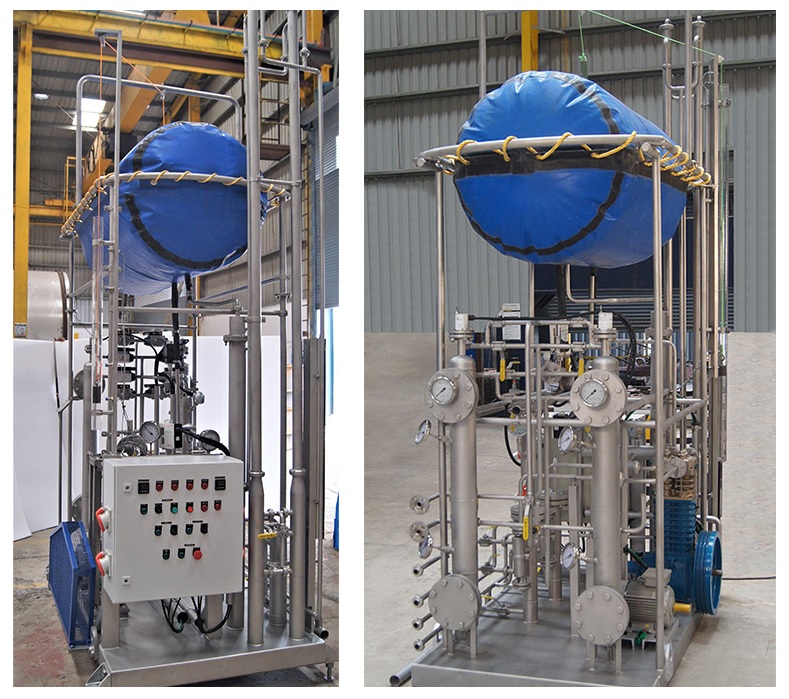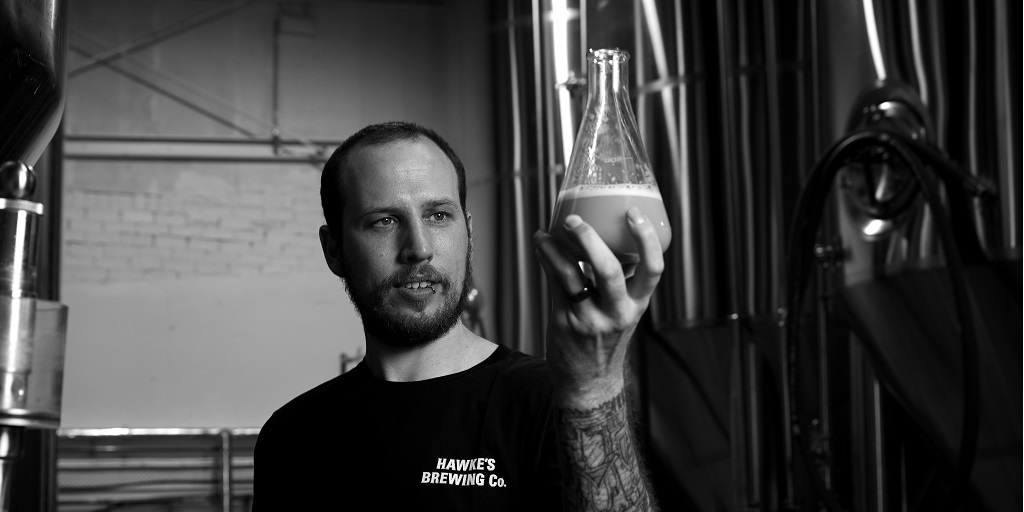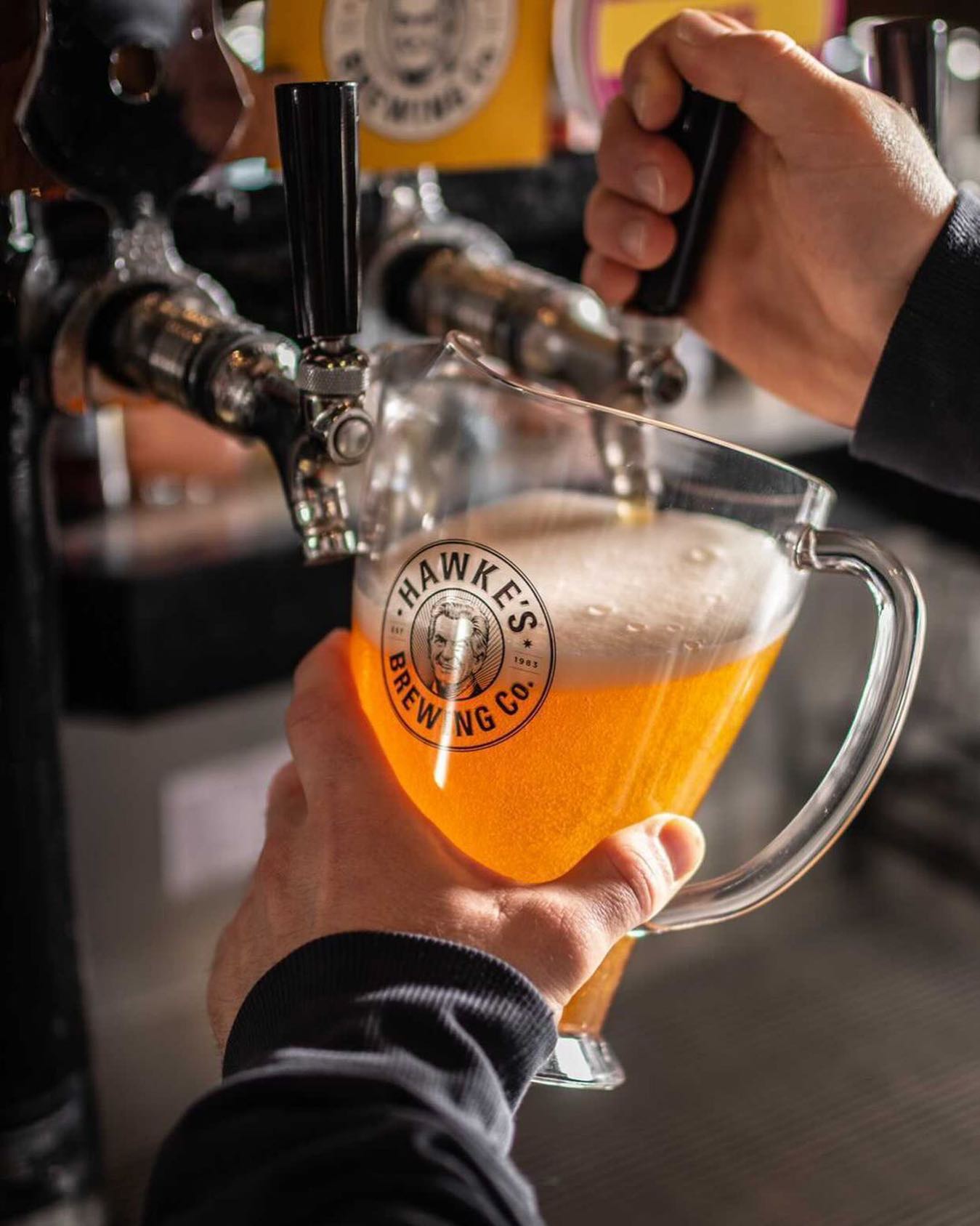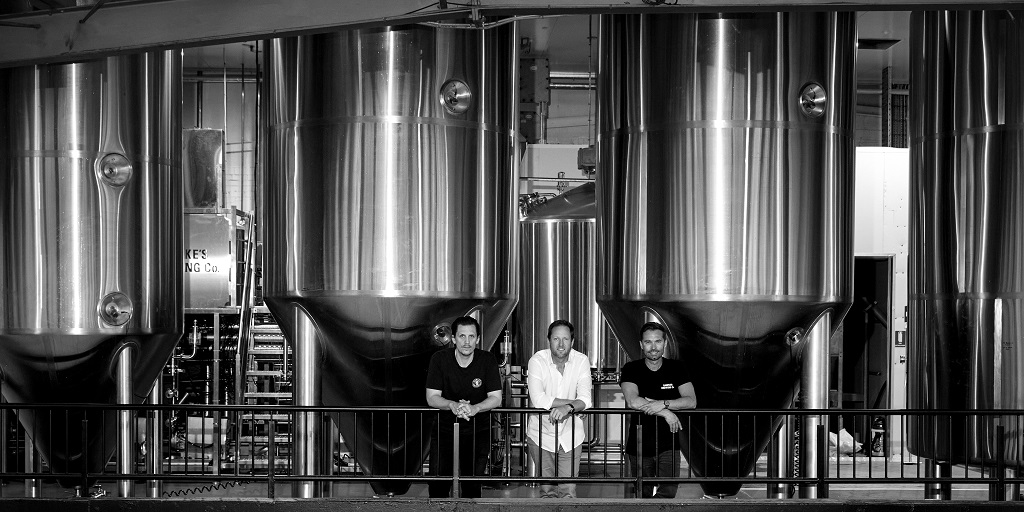Indoor farms and small scale plants put CO2 recovery in reach May 2022
Manufacturers and researchers are honing in on the Australian brewing industry’s desires to become more sustainable with carbon dioxide recovery and reuse projects.
Young Henrys and Terella are just two of the breweries which have invested in biological and agricultural projects to reuse CO2, and CO2 recovery technology is becoming more available to brewers than ever before due to the efforts of manufacturers such as Hypro Group and Earthly Labs.
Hawke’s Brewing Co. in Marrickville has invested in a major indoor farm project, which will allow them to hydroponically produce lettuces and other plants using CO2 recovered from their brewery.
Plants such as lettuce grow faster in a CO2 enriched environment, so the University of Technology Sydney team leading the project will use CO2 collected from the brewery’s fermentation tanks to introduce additional CO2 to the indoor plants, at around three times normal atmospheric levels.
This will save on Hawke’s CO2 footprint by not buying traditionally-farmed lettuce and saving the CO2 emitted in those farms as well as transport, refrigeration and irrigation.
“The project with Hawke’s is unique in that their venue encompasses a full scale brewery and a restaurant, it also has abundant solar electricity and a large roof to capture rainwater,” explained University of Technology Sydney Senior Lecturer Nick Bennett.
“So it is well suited to add indoor farming as it can directly consume the produce created at the restaurant and be powered from an existing solar system.”
Nathan Lennon, co-founder of Hawke’s Brewing, said that when the team secured its Marrickville site, they had an opportunity to design and build a brewery that could support its long-term goals, which have seen it support environmental organisation Landcare Australia.
“The brewery was our first true opportunity to take control of how we could live and breathe our eco-promise,” he explained.
“While our key focuses were and still are around energy consumption, water usage and waste treatment, we were also particularly interested in ways we could reduce our carbon footprint.
“Not long after we secured our site, we reached out to the team at UTS Tech to essentially help brainstorm ideas on ways we could reduce our carbon output, specifically through the brewing process.
“Brodie [French] our head brewer had some initial thoughts and we workshopped some builds around these with UTS and landed on the carbon capture unit as a novel way to close the loop on carbon emission, while also using that CO2 to help grow vegetables (or in the case of the Lucky Prawn, lettuce!) for use in the venue.”
Indoor farming and CO2 reuse

Outdoor farming has a high carbon cost throughout its lifecycle, so scientists and researchers are looking at ways to farm in other spaces.
Along with UTS PhD student Solomon Ould, Nick Bennett has been commissioning the indoor farm at Hawke’s newly-opened brewery and venue.
“Indoor hydroponic farming is an exciting field which is gaining popularity internationally as climate change effects are becoming realised,” Bennett explained.
“With indoor farming there are no concerns over drought, storms, and pests. We can grow high quality produce reliably and consistently and reduce transportation costs by having such a small distance between farm and table, in this case a matter of metres!”
But the project has been a challenge in terms of implementation.
“Many of the sensors which have been integrated into the system are to produce a vast amount of data to analyse and eventually train machine learning models (AI) to better control the plants growth and optimise production,” Bennett explained.
“With the sensing and control system we have developed for Hawke’s, we can control the light spectrum output, water pH, nutrient concentration, lighting movement, tank levels and water consumption all remotely from an app. Getting so many sensor inputs and dealing with all the data has been a demanding challenge.”
A system like this might be out of reach for other brewery owners, at least for a time, but it is important foundational work for the brewing and many other industries.
“They are agreeing to becoming part time farmers on top of their primary role as brewers so this does limit the market somewhat,” Bennet acknowledged.
“However with this pilot system we will be looking at the amount of labour required to operate the system and our aim is to maximise the amount of IoT-based automation.
“We are also considering the potential of using a greater proportion of the CO2 generated to feed a larger full-scale commercial indoor farm.
“With a separate facility that is committed to full time farming there is the potential to create a symbiotic relationship between brewers and farmers and it’s exciting to think what farming of the future may look like.”
Small scale CO2 recovery

Major brewers have had access to large-scale carbon dioxide recovery systems for years, but the footprint and cost of scalable CO2 recovery systems has made the technology prohibitive to the smaller end of the market, until recently.
Manufacturers such as Earthly Labs in the United States and Hypro Group, manufacturers based in India, have been investing in the development of pre-made units that can be retrofitted into existing breweries.
”The main reason CO2 recovery in craft breweries hasn’t taken off in Australia is that people just don’t know it exists at that small plant scale,” explained Peter Fraser of Hypro Group, which has developed the Hypro HyCrC system to fill this gap.
“There are very few people in the world that make this equipment, and people in the brewing industry themselves see this equipment as expensive.”
However, in a time when sustainability and combating climate change has never been more important, brewers are making decisions – from going carbon neutral like Capital Brewing or becoming a B-Corp like Sawmill – that don’t necessarily or immediately contribute to the bottom line.
“People might say it doesn’t stack up on dollars but there will be other things affecting the decision,” explained Fraser.
“If you’re in a remote location where it’s difficult to get supply, or its peak season and everyone wants CO2 – soft drinks and other manufacturers want it and often get priority – this provides surety of supply.
“And then there’s also the considerations around what it will do to our footprint on the globe.”
New CO2 systems and sustainability
While some of the challenges of bringing in a CO2 system are undeniable, some of the benefits around sustainability might be a gamechanger for breweries.
“One of the key benefits is the energy you will recover. With purchased CO2, you’ve paid someone to use energy to compress, refrigerate, liquify then ship the gas to your brewery,” Fraser explained.
“When you vaporise the CO2 for use, the refrigeration energy is generally lost as a tier 3 emission, adding to the GHG tier 3 emissions of the delivery vehicle.”
“The Hypro CO2 system recovers most of the refrigeration energy used in the liquifying step by utilising warm glycol that is returning from the brewery to vaporize the CO2.”
In addition, the CO2 recovered by these systems is food-grade.
“The recovered CO2 has very high purity”, Fraser explained. “The skid-mounted units have CO2 driers and deodourisers for removal of water and unwanted sulphurs, esters, and aldehydes to ensure clean gas ready for carbonation, meaning that no further processing needs to be done, and contributes to the brewing industry’s focus on “grain to glass” and locally sourced products.
“The system produces CO2 at >99.998% (<10ppb) purity with a rectifier; as pure as you’ll get from commercial producers. A rectifier also has the advantage of allowing fermenters to be put on collect earlier at higher oxygen levels.”
The future of CO2 recovery
Hypro has installed CO2 recovery systems at Kona Brewing Co. in Hawaii, as well as a system for a brewery in Bhutan, and Fraser expects demand for it to increase.
“There are several reasons why recovery of CO2 will increase in the future. The grain to glass philosophy is one,” he said.
“This process produces all-natural CO2 – most purchased CO2 is fossil gas or is derived from burning fossil fuels and there is an imperative to move away from this.
“A well-designed, on-site CO2 recovery plant will significantly reduce the carbon footprint of CO2 used in the process.
“When CO2 is purchased, there is the footprint of the fossil carbon itself, plus the refrigeration energy lost when the CO2 is vaporised for use, plus the tier 3 greenhouse gas (GHG) emissions due to the transport of gas from manufacturer to the brewery. With a well-designed CO2 recovery plant, the fossil carbon is replaced by atmospheric carbon from the fermentation, most of the refrigeration energy is recovered by heat exchange processes back into the refrigeration system, and there are no tier 3 emissions involved.
“There is also an operational benefit of less vehicle movements around what are often crowded sites.
“I believe that the next generation of CO2 recovery will be in the smaller to medium sized breweries; the message just needs to get out. Once the first craft brewery installs a recovery system in Australia, others will see the benefit and take it up.”




